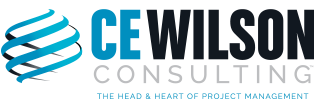Project management is more than just a beneficial skill; it’s a core competency that benefits…

8 Components of Effective Business Process Design
Once a major project is complete, it’s tempting to take a sigh of relief and assume the hard work is over. But the truth is, the end of the new project is just the beginning of making it operational and sustainable. Implementing new projects inevitably means processes will change in your organization as a result. It’s best to plan for these process changes early.
Thinking about how to make new processes effective, measurable and sustainable is important. Simply put, we’re talking about business process design.
A ‘business process’ is the grouping of activities that together form a way of delivering a valuable service, product, communication etc. to your end user or customer. Business process ‘design’ is the method you take to go about analyzing and creating those processes so that you’re delivering with value and efficiency. Think of it as streamlining.
As an example, let’s take a look at a restaurant owner who has the goal of making his end-to-end ordering and delivery process more efficient. To accomplish that, he’s going to have to look at the process as a whole, not just the individual functions. He can’t just focus on how to take better orders; he also has to look at what happens from the time customers enter the restaurant until the time they leave. This involves several individual functions, including ordering, food preparation, plating, table delivery and bill payment processes. Together, all these processes create the full workflow.
How can you tell if your business process design (BPD) is efficient? Here’s what to look for:
Consistent Use of Success Metrics — Measuring the success metrics you defined during the project is a key way to tell if your BPD is effective. The team should be meeting or exceeding those performance metrics.
Simple, Clear Instructions— The process instructions should be simple enough for all participating resources to follow, even if they weren’t directly involved in executing the project.
Defined Contingency Plans— We never want to think something will go wrong, but it’s wise to be ready in case it does. You need to have plans in place for what happens if a part of the process fails, so people don’t get stuck and attempt to make up their own process.
Documented Training Processes— As people leave the team and new people take their place, it’s important to have comprehensive training plans in place to ensure a seamless transition between old and new team members.
Consistent Task Completion — Making sure everyone is completing tasks consistently reduces errors and increases efficiency. Consistent task/service/product delivery is a good sign of an effective BPD.
Clear Communication — You need a plan to communicate with all resources so everyone who needs to know about process changes is up-to-speed.
Defined Operational Procedures — You want the process to be able to continue with or without you. Defining and documenting operational procedures helps ensure the longevity of the process.
Noticeable Efficiency Improvements —Your internal customers should be noticing operational improvements. Those improvements will depend on the reason or the driver for wanting a change. Drivers might include time or cost savings, improved resource planning, faster time to market, paper reduction or improved transparency.
Now that you know the markers of an effective business process design, you can begin to build one that aligns with your process. Remember to focus on the workflow of activities needed to produce results from a ‘process view’ rather than a compartmentalized functional (task) view. While it is necessary to examine activities at a functional view, if you stop there, you’ll have processes that are choppy or disjointed.




